#apg
Explore tagged Tumblr posts
Text

richard siken inspired poem
241 notes
·
View notes
Text





Spotil Giving
Spotils are the staple food of Wing Alayna. They have a taste a bit like a mix between a potato and an apple. These versatile fruits make excellent gifts during the month of Spotilan especially, when they tend to be in full fruit.
#art#artists on tumblr#drawing#Floratober#Floratober 2023#called it by its Buddy name on the pic oops#Floralan#Floralan 2023#Wing Alayna#Spotil family#Spotils#Spotil#Spotil Giving#JI#JI Planet#KnL#Knights & Lilies#APG#Lily#trying something different again#day 15#plains flora
8 notes
·
View notes
Text

Ash et Ember : retour à la vie normale
5 notes
·
View notes
Text

3 notes
·
View notes
Text
é tão engraçado porque ninguém sabe de porra nenhuma.
mas de alguma maneira continuamos fingindo até que alguém acredite e isso torne nossa farsa algo real.
0 notes
Text
Prime Gaming: LEGO The Hobbit, Kerbal e mais jogos gratuitos
Prime Gaming: LEGO The Hobbit, Kerbal, The Falconeer e mais jogos gratuitos. #amazon #primegaming #gaming #pc #gog #thehobbit #LEGO
A nova leva de jogos grátis do Prime Gaming está chegando com diversos títulos, incluindo mais um jogo da saga do Senhor dos Anéis: LEGO The Hobbit. A Amazon, com o lançamento da segunda temporada da série live-action Os Anéis de Poder, busca atrair usuários para essa produção. Outro destaque é Kerbal Space Program, um jogo hilário que explora as visões de fãs que desejam ir para o espaço de…
0 notes
Text
IA Prep: Botany (Taxonomy)
APG System:
The Angiosperm Phylogeny Group is an informal international group of systematic botanist who came together to establish a consensus on the taxonomy of angiosperms that would reflect new knowledge about plant relationships discovered through phylogenetic studies.
An important motivation for them was what they considered deficiencies in prior classifications since they were not based on monophyletic groups.
Angiosperm Classification
In the past, classification systems were typically made by a single botanist or a small group, resulting in many systems. Different countries favored different systems.
Ex: The Engler system in continental Europe and the Bentham and Hooker system in Britain (preferred by Kew)
Before the availability of genetic evidence, angiosperm classification was based on morphology and biochemistry.
After the 1980s, detained genetic evidence analyzed by phylogenetic methods became available. While confirming or clarifying some relationships in existing classification systems, it radically changed others.
The genetic evidence created a rapid increase in knowledge which led to many proposed changes, posing problems for all the classification systems at the time.
The impetus came from a major molecular study published in 1993 based on 5000 flowering plants and a photosynthesis gene rbcL, producing shocking results.
At first there was reluctance to develop a brand new system entirely based on a single gene, but subsequent work continued to support these findings.
The studies involved were a huge collaboration between a very large number of scientists. Instead of naming each person's part individually, they opted to name the entire project Angiosperm Phylogeny Group classification or APG.
The first APG publication was in 1998 and was widely accepted. After that 3 revisions have been published: APG II in 2003, APG III in 2009, and APG IV in 2016.
13 researchers have been credited as authors for the 3 papers and 43 more as contributors.
Principles of the APG system:
principles of the APG's approach to classification were set out in the first paper of 1998, and have remained unchanged.
i) The Linnean system of orders and families should be retained. "The family is central in flowering plant systematics." An ordinal classification of families is proposed as a "reference tool of broad utility".
ii) Groups should be monophyletic. The main reason why existing systems are rejected is because they do not have this property, they are not phylogenetic.
iii) A broad approach is taken to define the limits of orders and families. It is said that a limited number of larger orders will be more useful. Families containing only a single genus and orders containing only a single family are avoided.
iv) Above or parallel to the level of orders and families, the term clades is used more freely.
APG I (1998)
The initial paper was the first to systematically re-classify angiosperms primarily on the basis of genetic characteristics.
The authors' views were that there is a need for a classification system for angiosperms at the level of families, orders and above, but that existing classifications were "outdated".
The main reason why existing systems were rejected was because they were not phylogenetic.
An ordinal classification of flowering plant families was proposed as a "reference tool of broad utility".
The broad approach adopted to defining the limits of orders resulted in the recognition just of 40 orders.
Only a handful of families had been adequately studied, but the primary aim was to obtain a consensus on the naming of higher orders
While the relationship of orders was established, their composition and order was not.
A major outcome of the classification was the disappearance of the traditional division of the flowering plants into two groups, monocots and dicots. The monocots were recognized as a clade, but the dicots were not.
A number of former dicots were placed in separate groups basal to both monocots and the remaining dicots, the eudicots or 'true dicots'.
APG II (2003)
The second paper was published as an update to the classification of 1998.
the focus shifted to the family level, in particular those families generally accepted as problematic.
consensus was achieved relatively easily resulting in an updated classification at the family level
The authors stated that changes were proposed only when there was "substantial new evidence" which supported them
The classification continued the tradition of seeking broad circumscriptions of taxa, trying to place small families containing only one genus in a larger group
The authors stated that they have generally accepted the views of specialists, although noting that specialists "nearly always favor splitting of groups"
APG II continued and extends the use of alternative 'bracketed' taxa allowing the choice of either a large family or a number of smaller ones.
Some of the main changes in APG II were: (important)
i) New orders were proposed, particularly to accommodate the 'basal clades' left as families in the first system.
ii) Many of the previously unplaced families are now located within the system.
iii) Several major families were re-structured. In 2007, a paper was published giving a linear ordering of the families in APG II, suitable for ordering herbarium specimens.
APG III (2009)
The third paper updates the system described in 2003.
The broad outline of the system remains unchanged, but the number of previously unplaced families and genera is significantly reduced.
This requires the recognition of both new orders and new families compared to the previous classification.
The number of orders goes up from 45 to 59; only 10 families are not placed in an order and only two of these (Apodanthaceae and Cynomoriaceae) are left entirely outside the classification.
Authors say that they tried to leave long-recognized families unchanged, while merging families with few genera. They "hope the classification will not need much further change."
A major change is that the paper discontinues the use of 'bracketed' families in favour of larger, more inclusive families. As a result, the APG III system contains only 415 families, rather than the 457 of APG II.
In the same volume of the journal, two related papers were published. One gives a linear ordering of the families in APG III; as with the linear ordering published for APG II, this is intended for ordering herbarium specimens.
APG IV (2016)
In the development there was some controversy over the methodology and the development of a consensus proved more difficult than in previous iterations. In particular Peter Stevens questioned the validity of discussions regarding family delimitation in the absence of changes of phylogenetic relationships.
Further progress was made by the use of large banks of genes, including those of plastid, mitochondrial and nuclear ribosomal origin
The fourth version was finally published in 2016. It arose from an international conference hosted at the Royal Botanical Gardens in September 2015 and also an online survey of botanists and other users
The broad outline of the system remains unchanged but several new orders and families are included, and some previously recognized families are lumped.
This brings the total number of orders and families recognized in the APG system to 64 and 416, respectively.
---------------------------------------------------------------
Herbarium: Meaning of Herbarium
A herbarium is a place where plants are collected from far and wide and preserved in a pressed and dried condition.
They are stores in pigeon hole almirahs according to accepted systems of classification.
The dried plant is pressed onto a sheet. Fleshy plants like Cactaceae (cacti) are preserved in preservatives instead of a dried state.
Herbaria were initiated by an Italian taxonomist Luca Ghini, but the concept of preserving plant specimens in dried form is 450 years old.
The first herbarium of the world was established in 1545 in University of Padua, Italy.
Present day Herbarium sheets have a definite size: 29x41cm. ± 1 cm.
Functions of Herbarium
is it an invaluable conservatory of plant material of flora from around the world, they provide one place to study it all.
The labels of herbarium sheets are valuable, they provide data for botanical, ethno-botanical, and phytogeography studies.
The herbarium serves as a helpful aid in teaching botany to students in institutions where they are present.
Preserved specimen are used in almost all types of taxonomic research, it is essential for biosystematics today to correctly identify and name plants.
The specimen are used as a source of material for anatomical, palynological and chemo-taxonomical studies.
They provide important data on places of plant occurrence, time of flowering, and other data for research in embryology, cytology, and ecology.
Kinds of Herbaria
Depending upon the interest of the organization or institution:
- Herbaria of Organizations
- Regional Herbaria
- Local Herbaria
- Herbaria of institutions, Universities, Colleges, etc.
Depending on categories:
- Herbaria of drugs and medicinal plants
- Herbaria of crop plants and weeds in cultivated fields etc.
Important Herbaria of the World
- Royal Botanic Garden (Kew)
- Museum National d’ Historia Naturelle (Paris)
- Kemerovo Botanical Institute (Leningrad)
- Conservatoire et Jardin Botaniques (Geneva)
Herbaria of India
- Botanical survey of India, Andaman and Nicobar circle, Port Blair
- Botanical survey of India, Arid zone circle, Jodhpur.
- Botanical survey of India, Sikkim Himalayan circle, Gangtok, Sikkim.
- Delhi University Herbarium, Delhi.
- Lloyd Botanic Garden, Darjeeling.
- School of Plant Morphology, Meerut College Meerut. (contains approximately 25,000 specimens).
Making of Herbarium
Involves collection, drying, poisoning, mounting, stitching, labeling and deposition.
Collection: Plants are collected first, angiospermic material should have grown leaves, complete inflorescence, flower and fruit etc.
Size of the material depends upon the requirements and availability. Herbaceous small plants may be collected with roots, but for woody plants just 4-6 twigs are enough.
One should not collect diseased, infected or inappropriate plant material.
The collection should be given a field number. The species should have least 4-6 specimens with same field number.
The habit, habitat, flower, color locality interesting features etc. should be noted down in a field note book.
Drying and Poisoning: The specimens should be preserved in blotting paper or newspaper after spreading it correctly.
It should be pressed in field press.
After 2-3 sheet changes, the specimen is dried.
To keep the specimen away from disease or pests poisoning is done. Chemicals like corrosive sublimate (HgCh) are either sprayed or painted on the dried specimen.
Mounting, Stitching, and Labelling: Dried specimen are glued and or stitched onto herbarium sheets made up of thick card sheets of 29 x 41 cm ± 1cm size and labelled.
Labels have all the information about Botanical name, Local name, Locality, time, characters, collector’s names etc.
After identification the sheet is placed in species cover.
All the species of one genus are placed in one genus cover, which finally is kept in family cupboard of Herbarium.
For keeping the specimen for long time, they should be protected from pests and insects like Silver fish and Book worm etc. DDT spray and or copper sulphate solution helps.
Identification and Determination of Plants:
Usually identification is the process through which specimen whose name is not known is recognized by its characters to known plant and given the name.
Now the practices are stopped since no plants are identical. The process is called determination and the slips are marked Determinovit (Det) slip.
For identification, the scientific method is to first study the character of plant, check them with the flora of the region, work keys and, compare with full description and illustration, then it is carefully compared with earlier identified plants of that species or variety.
If s plant does not fit in the key or match in the herbarium, it is compared to species of adjacent floras in large herbaria.
After identification the important process is to use correct nomenclature. Always use the latest nomenclature.
Problems in Management:
- Lack of knowledge on significance.
- Wrong notion that it is simply a storehouse of dead plants.
- Lack of sufficient trained man-power
- Lack of taxonomists (i wonder why ffs)
- Lack of funds
----------------------------------------------
Bentham and Hooker Classification (Natural System)
The work of G. Bentham and J.D. Hooker.
They have grouped together advanced seed bearing plants into a major division called Spermatophyta.

Class Dicotyledonae: angiosperms in which the seed bears two cotyledons, leaves exhibit reticulate venation. Divides into 3 subclasses:
Subclass Polypetalae: flowers contain perianth (calyx and corolla), in the corolla petals are free. Divides into 3 series:
1 Series Thalamiflorae: Thalamus is conical, elongated or convex, flowers hypogynous. - 6 orders and 34 families.
2 Series Disciflorae: Flowers hypogynous due to presence of ring like disc below ovary - 4 orders and 22 families.
3 Series Calyciflorae: Flowers epigynous or perigynous - 5 orders and 27 families.
Subclass Gamopetalae: Flowers with distinct calyx and corolla. In the corolla petals are fused. Divides into 3 series:
1 Series Inferae: Epigynous flower, either regular or zygomorphic - 3 orders and 9 families.
2 Series Heteromerae: Ovary superior with more than two carpels with regular flowers - 3 orders and 12 families.
3 Series Bicarpellatae: Superior, bicarpellary ovary. Flowers actinomorphic to zygomorphic - 4 orders and 23 families.
Subclass Monochlamydae: Flowers with either absence of or one non-essential whorl (perianth). Divides into 8 series:
1 Series Curvembryae: Usually single ovule, embryo coiled around the endosperm. - 6 families
2 Series Multiovulate Aquaticae: Aquatic plants with a syncarpous ovary and many ovules. - 1 family
3 Series Multiovulate Terrestris: Terrestrial plants with syncarpous ovary and many ovules. - 3 families
4 Series Microembryae: one ovule, small, tiny embryo endospermic seed. - 4 families
5 Series Daphnales: one carpel and one ovule - 5 families
6 Series Achlamydosporae: Ovary inferior, 1 to 3 ovules, unilocular - 3 families
7 Series Unisexuales: Flower unisexual, perianth usually absent - 9 families
8 Series Ordines Anomali: Plants with uncertain systematic position but close to unisexuales - 9 families
Class Gymnospermae: gymnosperms in which seeds are not enclosed in fruits,
Places in between dicots and monocots, could not recognize the phylogenetic significance.
Divided into 3 families: Gnetaceae, Conferaceae and Cycadaceae.
Class Monocotyledonae: Includes angiosperms in which the seed bears only one cotyledon. Leaves exhibit parallel venation. Consists of Closed Vascular Bundles. Divides into 7 series':
1 Microspermae: Ovary inferior; seeds minute and non-endospermic. - 3 families
2 Epigynae: Ovary inferior, seeds large and endospermic. - 7 Families
3 Coronarieae: Ovary superior, perianth petalloid. 8 Families
4 Calycinae: Ovary superior, perianth sepalloid. 5 Families
5 Nudiflorae: Perianth reduced or absent. Seeds are endospermic.- 5 Families
6 Apocarpae: Carpels more than one, free, seeds are endospermic. - 3 Families
7 Glumaceae: Perianth reduced or absent, scaly bracts present. - 5 Families
In total, Bentham and Hooker classified the angiosperms into 202 families while providing distinct diagnostic key characters to each.
Merits:
1. One of the most valuable contributions is the description of the taxa at all levels. Descriptions are accurate and it is easy to identify plant species up to family level.
Since the descriptions were based on direct observation, they have become models of accuracy.
They placed order Ranales at the beginning of the system, a reasonable choice.
The placement of dicots before monocots is also accepted by all modern taxonomists.
Demerits:
Gymnosperms are more primitive than angiosperms and should not have been placed between dicots and monocots.
The introduction of monochlamydeae is a drawback since the group consists of both advanced and primitive forms.
Among the monocots, Orchidaceae is placed in the beginning with all it's advanced characters.
The subdivision of monocots is based on the position of ovary and characters of perianth. This resulted in an anomalous situation for many families.
#exam season#biology#notes#science#botany#plants#plant biology#plant science#taxonomy#classification#herbarium#i want to sleep#APG#dried flowers#dried plan#pressed flowers
1 note
·
View note
Text

Api Group Corporation Sees Share Price Surge Despite Net Deficit in Q4 Earnings Report https://csimarket.com/stocks/news.php?code=APG&date=2024-02-29160354&utm_source=dlvr.it&utm_medium=tumblr
0 notes
Photo

Laughing Water Capital is thriving. The city is a center of financial activity and the most important metropolis in the world. The future is bright and the city is prospering. That is, until the letter arrives. The letter is from the mayor and it is not good news. The city is in trouble, the finances are a mess and the future is in doubt. The only way to save the city is to sell off the Laughing Water Capital. The news is a shock and the city is in an uproar. The decision will devastate the city, but there is no choice. The sale goes through and the city is saved. But at what cost?
0 notes
Text
Stir-fried Smell tree (cooking)
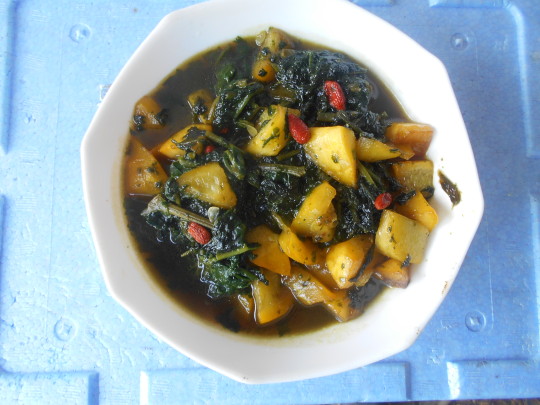
The leaves of Kusagi (Smell tree) in the garden are collected and boiled in plant ash. Leave it for half a day and fry it with sesame oil, sugar and soy sauce. Japanese pepper seasoning. Although it is bitter, it is said that it has been used as food in Zen temples since long ago. It used to belong to the Verbenaceae family, but now belongs to the Labiatae family. (APG classification system) It is highly fertile and breeds disgustingly well. Since it can be taken in large quantities, it is effective as emergency food.
This time, stir-fried with yellow melon.
クサギの炒め物(料理)
庭のKusaki(Smell tree)の葉を採取して、草木灰で煮る。半日置いて、ごま油、砂糖、醤油で炒め物にする。苦いけど、むかしから禅の寺では食糧にしていたという。もとクマツヅラ科だったが、今ではシソ科とされている。(APG分類体系)繁殖力旺盛で、憎たらしいくらいに良く繁殖する。量が取れるので、救荒食糧として有効ということだ。
今回は、黄色瓜と炒めたもの。
(2023.06.17)
Rei Morishita
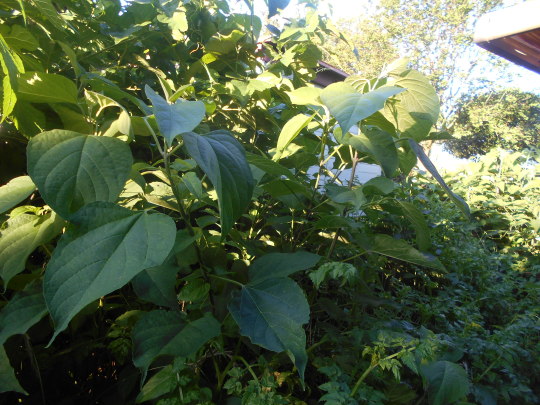
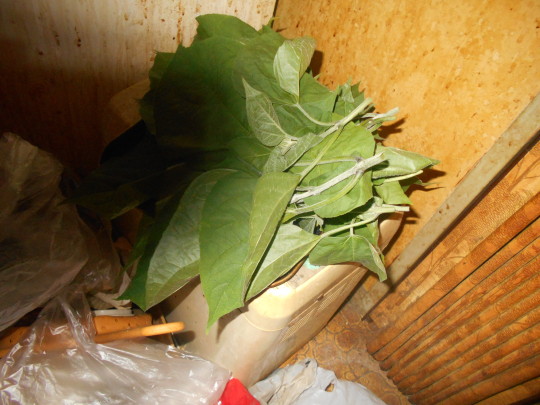

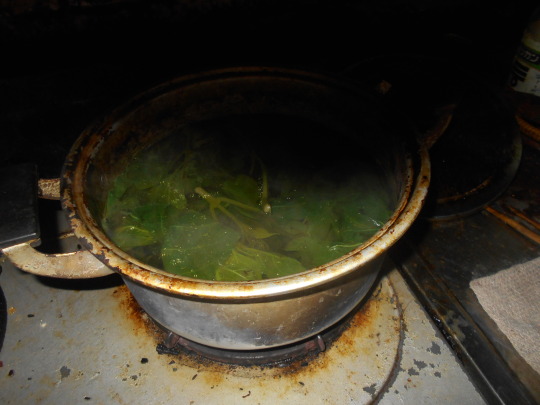



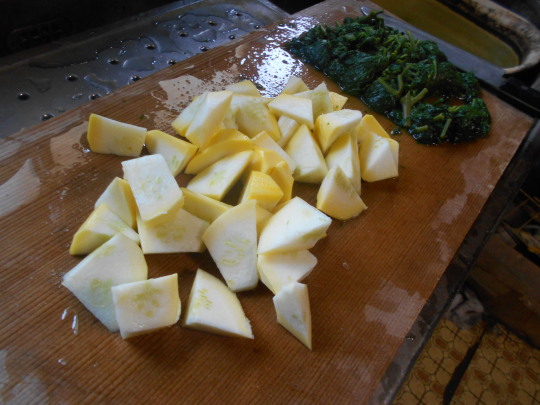
1 note
·
View note
Text
BASF to expand production capacity for bio-based alkyl polyglucosides in Asia-Pacific and North America
Headquarter of Basf in Ludwigshafen BASF will expand its global alkyl polyglucosides (APG®s) production capacity with two expansions at its sites in Bangpakong, Thailand, and Cincinnati, Ohio. By expanding in two regions in parallel, BASF, the global market leader for APGs, can strengthen its position and serve customers even faster and more flexible from the regional supply points, while at the…

View On WordPress
0 notes
Text
APG IET PARTNERS WITH BLUE RIBBON BAGS TO OFFER DELAYED LUGGAGE SERVICE TO 275 TICKET HOLDERS
We’re thrilled to announce that APG has signed an exclusive partnership agreement with Blue Ribbon Bags to provide baggage protection services for all passengers traveling with 275 tickets. The partnership aims to offer peace of mind to passengers in case of lost or delayed baggage incidents. Starting May 1, 2023, all tickets issued in GDS on 275 will automatically include Blue Ribbon Bags’…

View On WordPress
0 notes
Text
Präventionskampagne am APG
(Foto: pm) Sicheres Radfahren nur mit Fahrradhelm Neckarelz. (pm) „Das Gehirn ist alles: Unser Verstand, unsere Sprache, unser Gefühl – kurz das BESTE, was wir haben und deshalb besonders schützenswert. Eine Störung der Kommunikation im Gehirn ist vergleichbar mit einer Störung in einem sensiblen Computernetzwerk, die zu irreparablen Ausfällen führen kann. Dabei ist die Lösung so einfach: Das…

View On WordPress
0 notes
Text
youtube
This was my first cosplay skit - and it won best skit in the cosplay competition! 🥰 Here I was just glad that people laughed!
Pōhutukaryl Cosplay as Mia Fey Ace Attorney
GGWP - Great Games With Pals cosplay competition filmed by APG Media Dominion Museum Building, Te Whanganui-a-Tara October 13 2024
buy me a Ko-Fi?
#mia fey#ayasato chihiro#ace attorney#gyakuten saiban#fey family#fey clan#ace attorney cosplay#cosplay#gaming cosplay#game cosplay#2024#ggwp 2024#videographer: apg media#Youtube
18 notes
·
View notes
Text
eu costumava escrever toda vez que me sentia triste. eu escrevia todos os dias. eu perdi esse hábito com o tempo porque a vida aconteceu no meio da minha tristeza e por um tempo eu achei que ela deixou de existir. ��s vezes confundimos um planner cheio de tarefas riscadas com uma vida feliz. pelo jeito, é possível ter os dois, eu só não descobri como. de alguma maneira, eu achei que voltar a escrever seria um atestado de óbito -pronto, morri. estou triste de novo - mas talvez seja diferente. talvez isso seja eu tentando tirar a tristeza de mim e a colocando nas palavras. talvez a tristeza vá embora se eu escrever as palavras certas. quem sabe? só me resta tentar.
0 notes
Text
Prime Gaming: Sete jogos gratuitos disponíveis em 5 de setembro de 2024
Shadow of the Tomb Raider, Eternights, Borderlands: The Pre-Sequel e mais jogos disponíveis em setembro para os usuários Amazon Prime Gaming. #prime #amazon #borderlands #tombraider
Essas quintas de jogos grátis estão imperdíveis, especialmente para assinantes do Amazon Prime Gaming, que traz sete títulos empolgantes, incluindo Borderlands: The Pre-Sequel. A famosa franquia dos mercenários insanos, que terá uma continuação, agora está acessível gratuitamente para os usuários Prime. Outro destaque é Eternights, um JRPG que, apesar de não ter conquistado grande popularidade…
0 notes